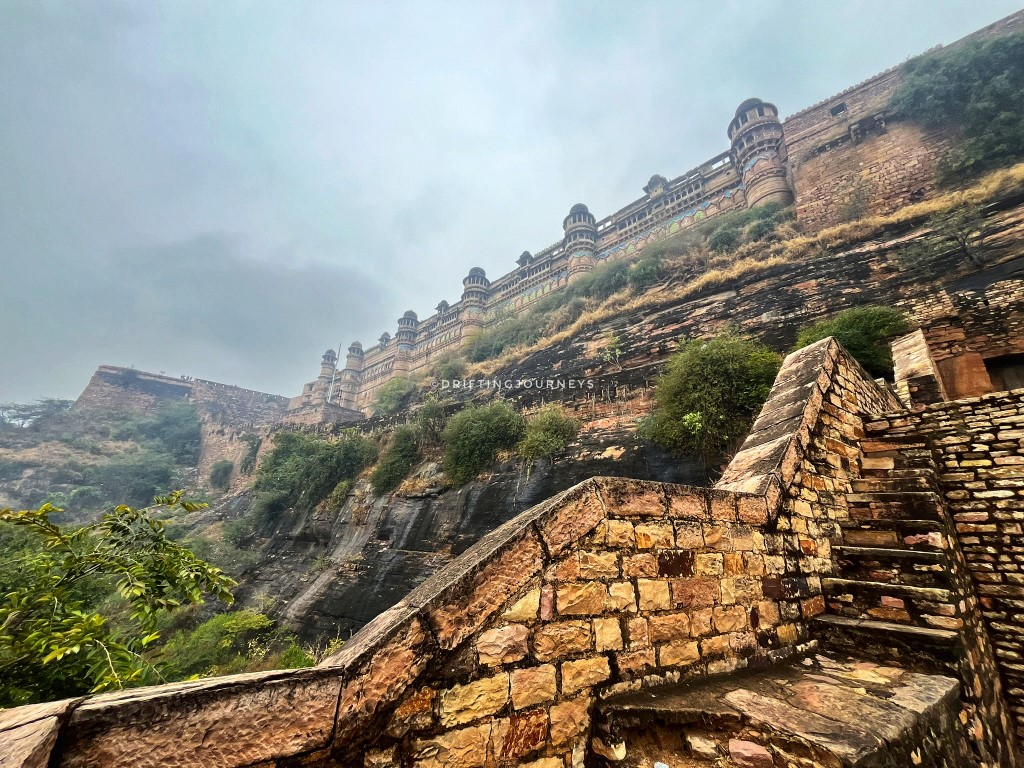Discovering Gwalior: A Perfect 3-Day Itinerary
I couldn’t contain my excitement when I chose Gwalior for our annual motorcycle adventure. It’s like stepping into a time machine, journeying through ancient caves, majestic palaces, and serene temples, all while soaking in the essence of India’s rich history.
If you’re considering Gwalior for your next trip and want to experience it to the fullest, I’ve crafted the ultimate 3-day itinerary just for you. What’s great about this plan is its flexibility; you can tweak it to suit your preferences and mood each day. So, let’s get started and explore the wonders of Gwalior together!
Contents
DAY 1: MONUMENTS OF GWALIOR
- GWALIOR FORT
- CHATURBHUJ TEMPLE
- SAAS BAHU TEMPLE
- BANDI CHHOR GURUDWARA
- TELI KA MANDIR
- GUJARI MAHAL
- TOMB OF MOHAMMAD GHAUS AND TANSEN
DAY 2: PALACES, MARKETS AND RELAXATION
DAY 3: GO OFF-BEAT AND VISIT MORENA
PLACES TO STAY
WHERE TO EAT
TRAVELER’S TIPS FOR GWALIOR EXPLORATION
MY GWALIOR SOJOURN
Day 1: Monuments of Gwalior
Gwalior fort
Let’s kick off our Gwalior adventure with a bang by heading straight to the iconic Gwalior Fort. Trust me, this is where the magic begins. The fort serves as the perfect starting point for our exploration, with many attractions clustered around it. To reach the fort, you can take either the Urvai gate or the Gujari Mahal route, but I recommend the former for easy access to the parking lot. But before we delve into the fort’s wonders, let’s make a quick pit stop to marvel at the incredible Siddhachal Jain rock-cut structures along the way.
Dating back to the 15th century, these structures feature multiple sculptures of Jain Tirthankars carved into the cliffs, with the tallest reaching an impressive 57 feet.
Now, it’s time for the main event – exploring the Gwalior Fort itself. Get ready to lose yourself in its grandeur as we visit Maan Mandir, Karna Mahal, Vikram Mahal, Jahangir Palace, the Jauhar Kund, and the Archaeological Museums. There’s so much to see and do here that you won’t want to miss a thing.

(Maan Mandir)

(Karna Mahal)

(Vikram Mahal)
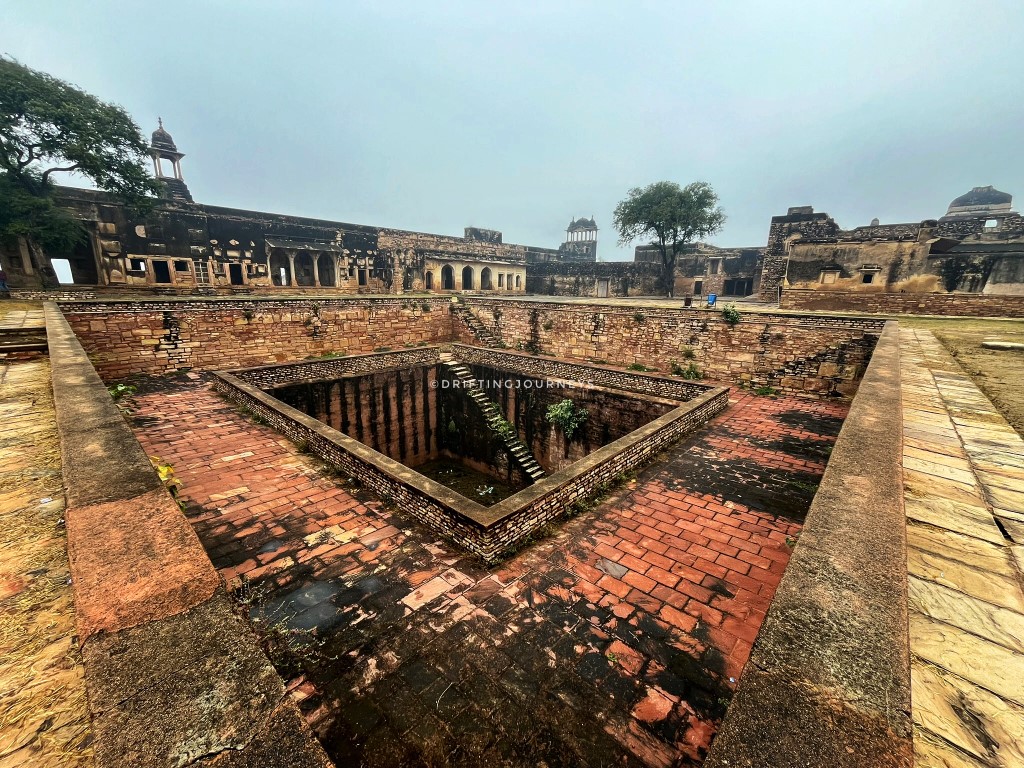
(Jahangir Palace)

(Jauhar Kund)

(Archaeological Museum, Gwalior fort)
Chaturbhuj temple
As you stroll down from Hathipol, another entrance to the Gwalior Fort, you’ll come across the Chaturbhuj Temple. This ancient marvel has attracted scholars and mathematicians from around the globe, intrigued by an inscription highlighting India’s monumental contribution to mathematics.
(Chaturbhuj temple)
Saas Bahu temple
After exploring the Chaturbhuj Temple, make your way to the Saas Bahu (Sahastra Bahu) Temples. These twin marvels, dating back to the 11th century, are nestled within the same complex. One temple is dedicated to Lord Vishnu, while the other pays homage to Lord Shiva.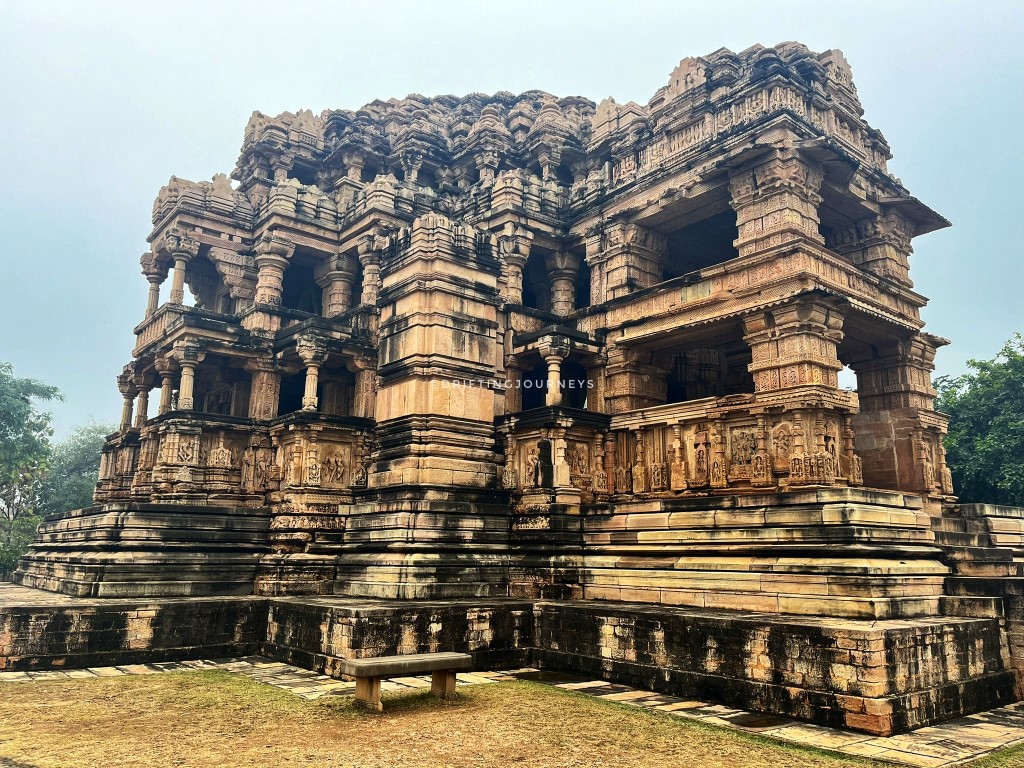
(Vishnu temple)

(Shiva temple)

(Inside the Vishnu temple)
Bandi Chhor Gurudwara
The Bandi Chhor Gurudwara holds significant importance for Sikh devotees. It was here that Guru Hargobind Ji, the 6th Guru of the Sikh community, was imprisoned by Jahangir. After enduring several years in captivity, Guru Hargobind Ji was finally released on the auspicious day of Diwali. Not only did he gain his freedom, but he also secured the release of 52 other kings who were imprisoned for opposing Jahangir’s rule. Since then, Diwali has been celebrated by the Sikh community as Bandi Chhor Diwas, commemorating the liberation of their revered Guru.Teli ka Mandir
You know, there’s something truly captivating about the Teli ka Mandir. While experts still argue over how old it really is, what strikes me most is its unique architectural style. Originally dedicated to Vishnu, this temple faced its fair share of challenges during the fort’s tumultuous history. It was rebuilt later on as a Shiva temple.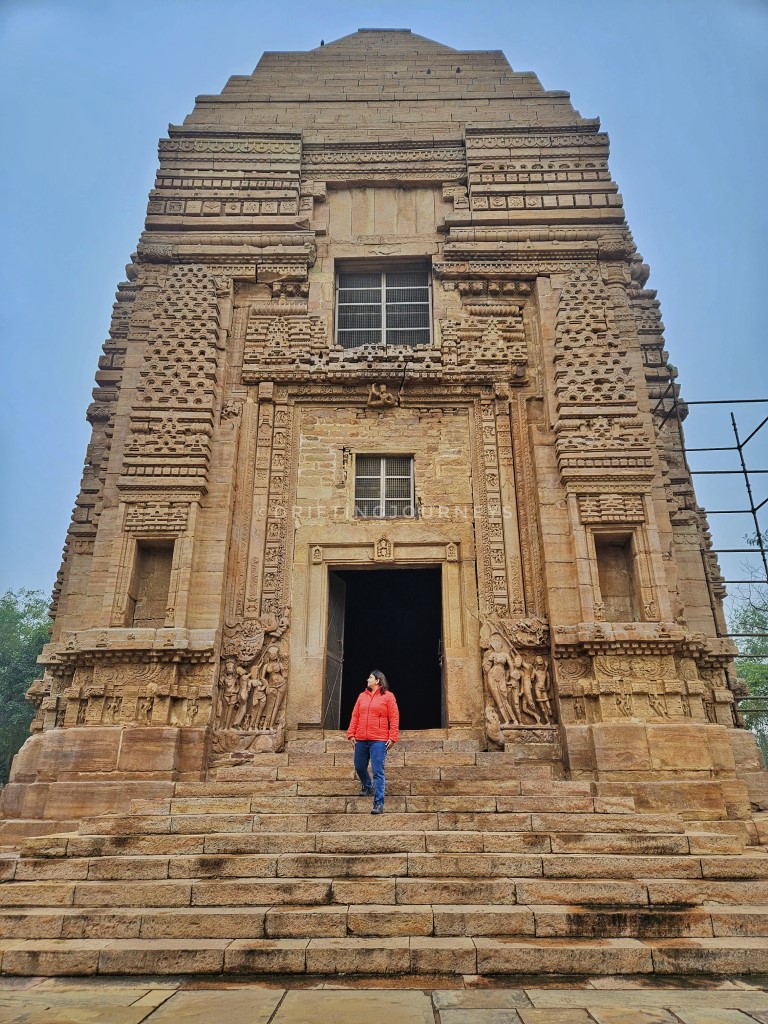

Gujari Mahal
Gujari Mahal offers two routes for access: either by foot from Hathipol gate or by road via Badalgarh gate on the fort’s eastern side. Positioned at the base of Maan Mandir Palace, it was constructed by Raja Maan Singh for his Gujari queen, Mrignayni.
Legend has it that during a hunt, the Raja witnessed Mrignayni’s extraordinary bravery as she intervened in a bullfight with her bare hands. Impressed, he proposed marriage.
She agreed to marry him but under three conditions: a separate palace for her, a constant water supply in the palace from the river Rai flowing through the Gwalior fort, and her accompanying him in all his battles.
Their mutual love for music led to the creation of numerous ragas in the Dhrupad style. Today, the palace serves as a museum showcasing artifacts from across Madhya Pradesh, with a notable exhibit of musical instruments in the basement, highlighting Gwalior’s rich contribution to Hindustani classical music.

(Gujari Mahal Museum)

(section dedicated to musical history of Gwalior)
Tomb of Mohammad Ghaus and Tansen
Speaking of Hindustani classical music, I can’t overlook the legendary figure, Tansen. Gwalior proudly hosts the tomb of this musical genius, who was one of the nine gems in Akbar’s court.



(Jaali work on the Mausoleum of Ghaus)

(The Dargah that is worshipped)
Beside Tansen’s tomb, there’s a tamarind tree, and locals believe that chewing its leaves bestows a sweet voice for singing.
As the day draws to a close, take some time to unwind and reflect on Gwalior’s rich history. It’s a perfect way to end your Day 1 adventure.
Day 2: Palaces, markets and relaxation
Jai Vilas Palace
Let’s dive into Day 2 by exploring the magnificent Jai Vilas Palace. Built in the 19th century by Maharaj Jayajirao Scindia of the Maratha Scindia dynasty, this sprawling European-style palace is a sight to behold.
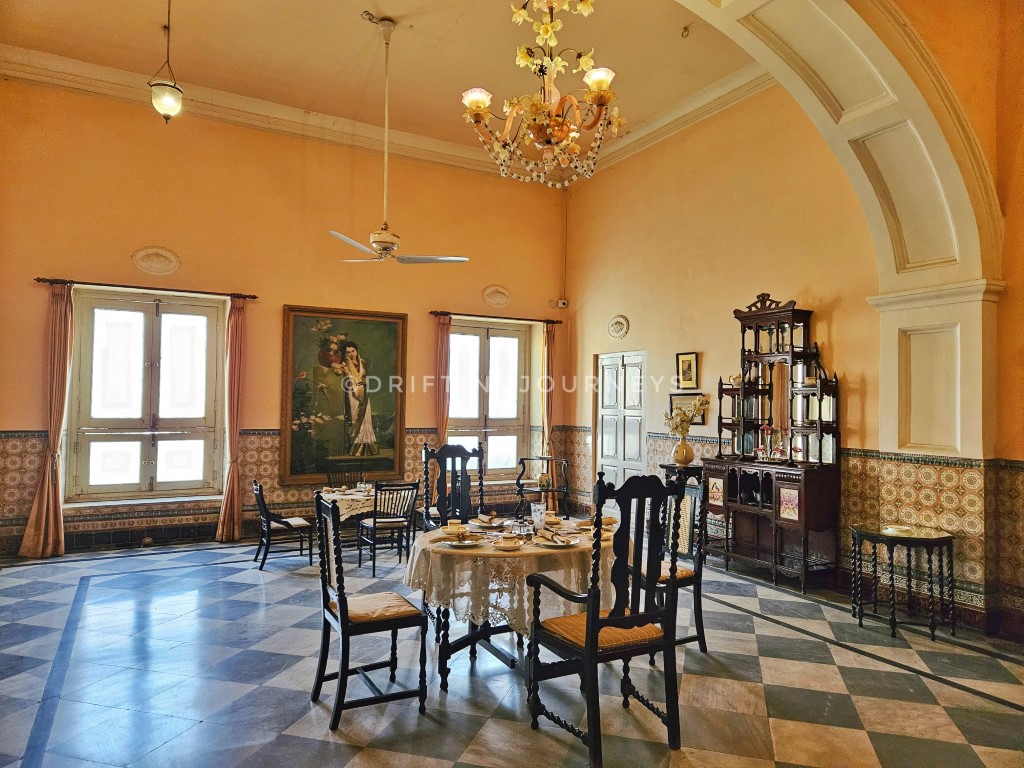


Keep in mind, there’s an entry fee of INR 300 per person, and you’ll need about 2 hours to explore the entire palace. Afterward, you can head over to the Scindia Chhatris, located just 1.5 kilometers away from the palace, to continue your exploration.
Moti Mahal
Moti Mahal is another gem crafted by the Scindias during the 19th century, boasting a splendid Hindu architectural style. As you step into its premises, you’ll be greeted by the lush garden adorned with numerous stone fountains, setting a serene ambiance.

Today, amidst its historic walls, several government offices find their home. If you’re keen on delving deeper into its history, local guides are available at the entrance for a small fee.
One of the unique features of Moti Mahal is its proximity to Baijatal, a picturesque water cistern with an amphitheater at its center. It’s the perfect spot to unwind and immerse yourself in the enchanting aura of Gwalior.
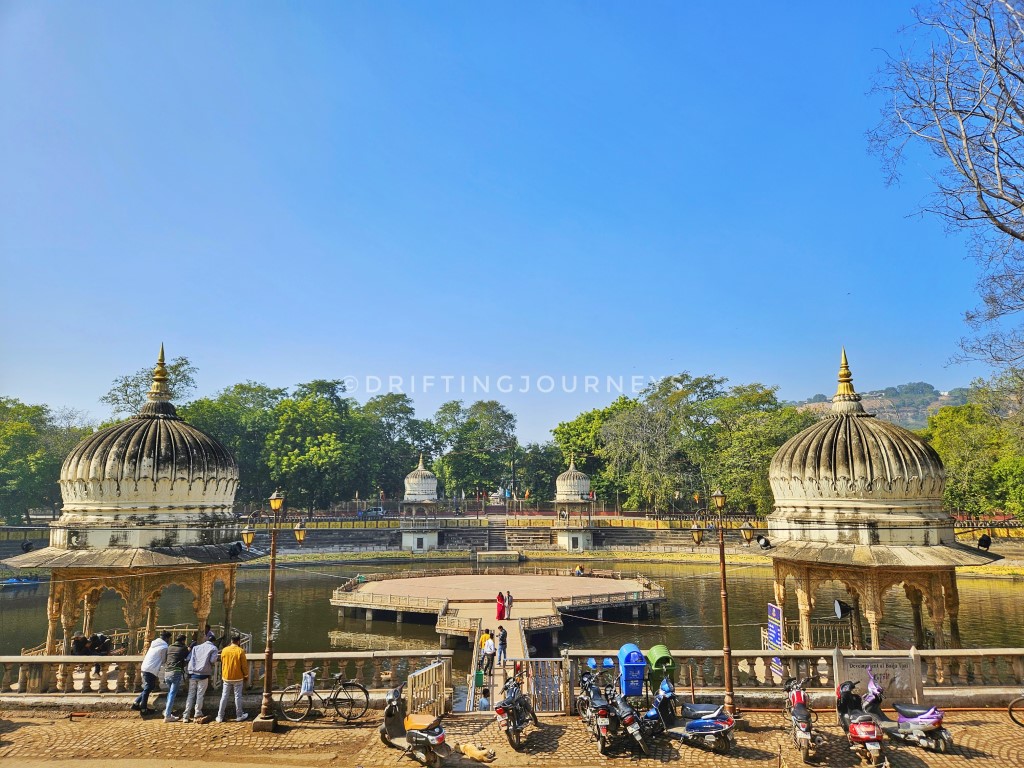
Markets of Gwalior
Gwalior, one of Madhya Pradesh’s bustling urban hubs, boasts some of the region’s oldest markets. While it may lack a distinct local specialty, the markets offer a treasure trove of handlooms and handicrafts sourced from across Madhya Pradesh. Among the must-visit markets are Sarafa Bazaar, Bada Market, Patankar Bazaar, and Topi Bazaar.
For enthusiasts of street photography, these historic markets and their narrow streets lined with quaint shops and ancient houses provide endless opportunities to capture the essence of Gwalior’s vibrant culture and heritage.
Day 3: Go off-beat and visit Morena
Venture off the beaten path and discover the charm of Morena, situated just 44 kilometers away from Gwalior. Known as the birthplace of North India’s beloved winter treat, Gajak, Morena is nestled at the northwestern borders of the Chambal valley, offering a picturesque landscape of hills, scrublands, and forests typical of central India.
While the name Chambal may evoke tales of legendary dacoits, Morena has much more to offer beyond its colorful history. Embark on a journey through ancient India by exploring four captivating destinations.
Kakanmath temple
Imagine stumbling upon a temple seemingly on the verge of collapse, yet steadfast in its resilience against the passage of centuries. Welcome to the Kakanmath Temple, nestled amidst verdant fields, its weathered facade telling tales of ancient devotion and enduring strength.


Chausath Yogini temple
Perched on a 30-foot tall hill in the Mitavali village of Morena district, the Chausath Yogini Temple, also known as Ekattarso Mahadev Mandir, dates back to the 11th century. Its circular structure is reminiscent of the old Indian Parliament building.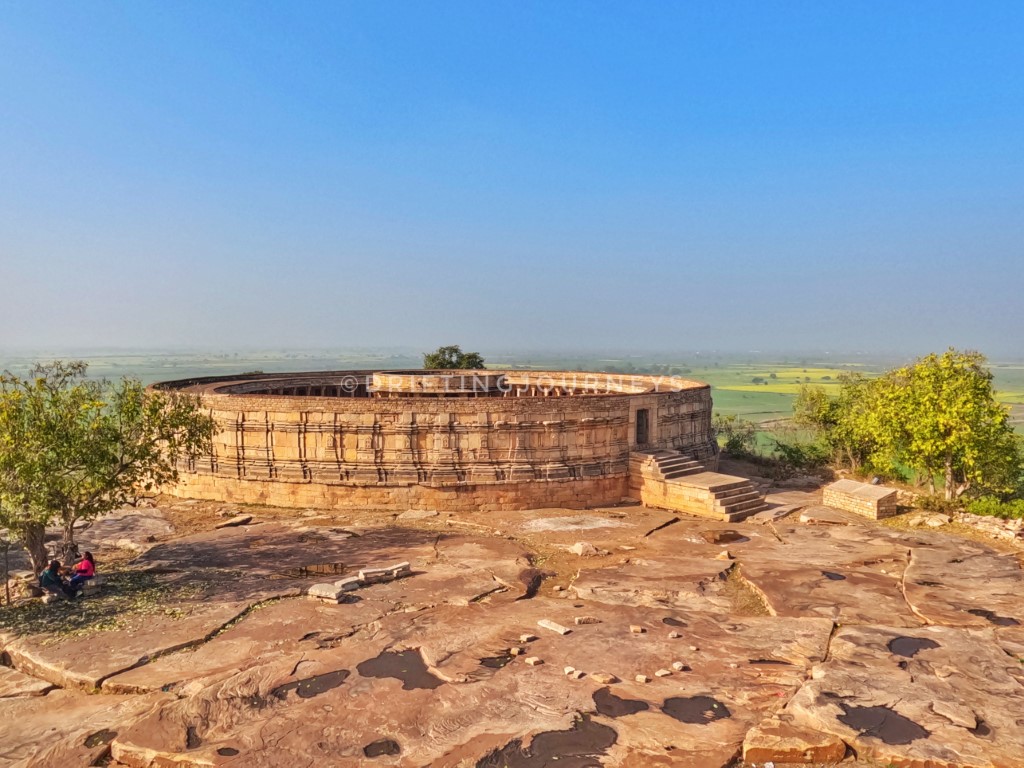

Garhi Padavali
Garhi Padavali, an oblong fort, stands atop a 25-30-foot-high mound, constructed by the Kacchapaghatas in the 11th century. Originally, it was solely a temple, but later, the Jat King of Dholpur fortified it by adding a bastion, transforming it into a small fort.
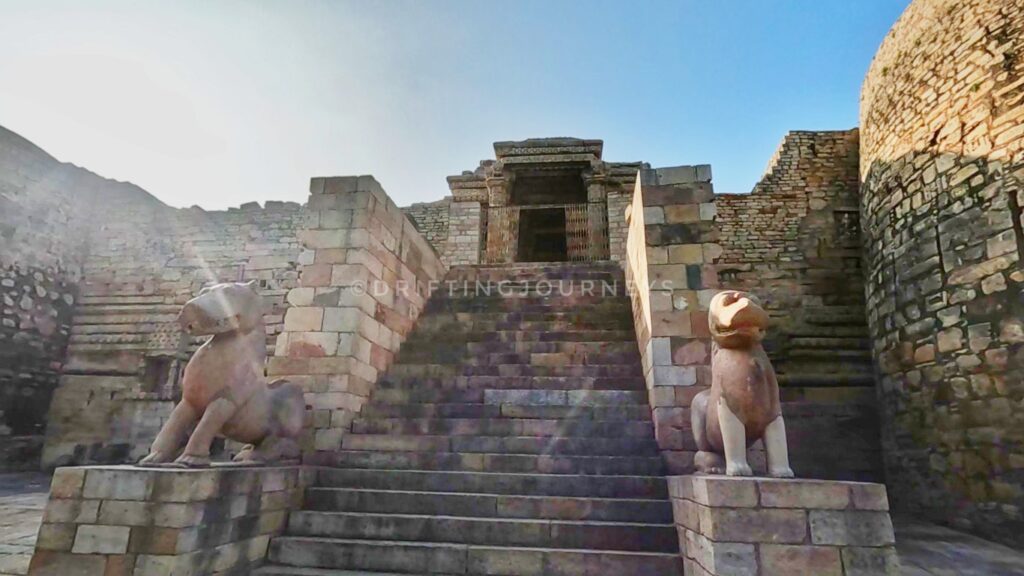

Bateshwar Group of temple
Nestled close to the Padavali site, the Bateshwar group of temples holds a fascinating history. Once a hide-out for the legendary dacoits of Chambal, this site has risen from absolute ruins. Constructed by the Gurjara kings between the 8th and 10th centuries, these temples sprawl over 25 acres of land.


With the unexpected cooperation of the dacoits, the ASI painstakingly unearthed remnants of the destroyed temple and reconstructed the entire complex, stone by stone. The majority of temples in the complex are dedicated to Lord Shiva, with a few honoring Lord Vishnu and the divine feminine, Shakti.
Among these temples stood a Hanuman temple, where dacoits sought blessings before their exploits and offered their loot to Lord Hanuman before sharing it among themselves.


Places to stay
Whether you prefer luxury, comfort, or budget-friendly options, Gwalior has a range of accommodations to cater to your needs and preferences:
Budget & mid-range stays
- Govinda Niwas Home
- AirBnb
- Hotel Centella
- Hotel Landmark
- The Moziac Hotel
- Dera Haveli Heritage Homestay
- Clarks Inn Suites Gwalior
- MPT Tansen Residency, Gwalior
- Anandmai Ghar- Homestay
Luxury stays
- Taj Usha Kiran Palace
- Neemrana Deo Bagh
- Radisson
- Park Inn by Radisson
- Krishnayan Heritage
Where to eat
From street-side delights to flavorful sit-down meals, Gwalior offers a culinary journey that caters to every palate and preference. Don’t miss the opportunity to explore the city’s vibrant food scene and savor its authentic flavors. Here are some recommendations:
Snacks
- Agarwal Poha Center (for breakfast only – highly recommended)
- S.S Kachoriwala (for all day snacks also – highly recommended)
- Panwadi Poha
- Pharmacist Poha
- Shri Ram Sweets
- Jodhana
- Bahadura Sweets (their Boondi Laddoos are to-die-for)
- Gajak from any store
Meals
- Rajasthani Dhaba (highly recommended for authentic Rajasthani thaali)
- Masala Darbar
- Param’s
- Indian Coffee House (old-style eatery serving great South Indian food)
- Kwality
Traveler’s Tips for Gwalior Exploration
- Purchase a bundle ticket for access to three key monuments at Gwalior Fort – the fort itself, Saas Bahu Temple, and Teli ka Mandir
- Remember, there’s a separate nominal entry fee for the archaeological museum located within Gwalior Fort and Gujari Mahal located at the foot of the fort
- Don’t miss the Lights and Sound show on Gwalior fort that happens every evening
- Enhance your Day 2 experience by visiting Gopachal Parvat, showcasing magnificent rock-cut statues of Jain Tirthankars. Note that the site has specific opening hours in the morning and evening
- Wear comfortable walking shoes as you’ll be on your feet throughout the day exploring the city’s attractions
- Ensure you have a hearty breakfast before heading to Morena, as there are limited food options available. Packing snacks for the day is advisable
- If visiting during winter, pack plenty of warm layers to stay comfortable during your explorations
- If you have extra days, consider adding Shivpuri or Datia to your itinerary for further exploration and discovery.
- Gwalior is most enjoyable during the winter months, from October to March when the weather is pleasant for sightseeing and outdoor activities.
My Gwalior Sojourn
Gwalior has seen a lot over the years. It’s been through battles and rulers, each leaving their own mark. Everywhere you look, there’s a story to be found. From ancient times to now, Gwalior keeps a bit of everything.
Exploring Gwalior is like taking a trip through time. There’s so much to see and learn about. It’s a city full of history and culture, just waiting for you to discover it.
I invite you to delve into the wonders of Gwalior and uncover its hidden treasures. Share your experiences in the comments below, and let’s celebrate the timeless allure of this extraordinary city together.
